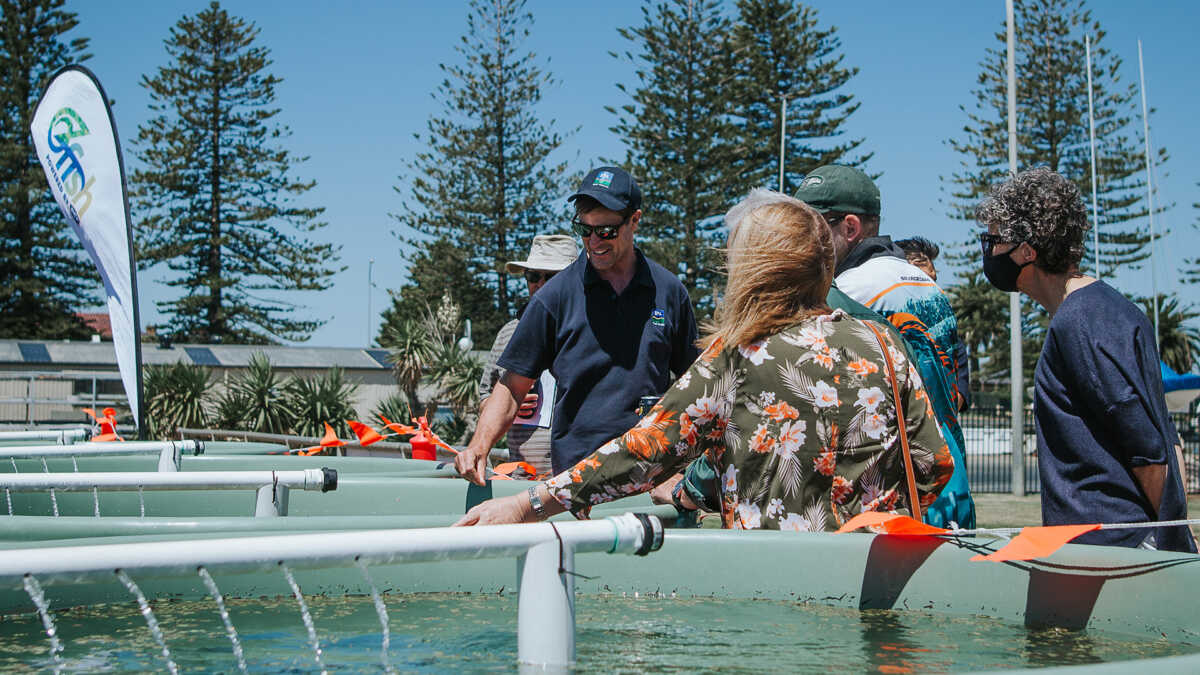Boosting Scotland's Coastline: Seagrass Restoration Bids

Table of Contents
The Ecological Importance of Seagrass Restoration in Scotland
Seagrass meadows are often overlooked, yet they are vital ecosystems offering a wealth of ecological benefits. Their restoration is crucial for the health of Scotland's seas.
Biodiversity Hotspots
Seagrass meadows are incredibly biodiverse habitats, acting as nurseries and refuges for a wide range of marine life. These underwater meadows support a complex food web, boosting fish populations and providing vital habitat for numerous species.
- Supports fish stocks, improving fishing yields: Many commercially important fish species, such as cod and plaice, rely on seagrass beds for spawning and juvenile development. Restoring these habitats directly contributes to healthier and more productive fish stocks.
- Provides crucial habitat for endangered species: Scotland's waters are home to several endangered species that depend on seagrass for survival. Seagrass restoration projects directly contribute to their conservation.
- Increases overall marine biodiversity: The restoration of seagrass meadows increases the overall biodiversity of the area, creating a more resilient and healthier marine ecosystem. This biodiversity is vital for the long-term health of our seas.
Carbon Sequestration
Seagrasses are exceptionally efficient at absorbing carbon dioxide (CO2) from the atmosphere, making them a significant part of the fight against climate change. This "blue carbon" sequestration is a crucial natural climate solution.
- Significant carbon sink, reducing greenhouse gas emissions: Seagrass meadows are incredibly effective carbon sinks, absorbing CO2 at a rate much higher than many terrestrial ecosystems.
- Helps combat ocean acidification: By absorbing CO2, seagrasses help to mitigate ocean acidification, a serious threat to marine life.
- Contributes to Scotland's climate change targets: Investing in seagrass restoration directly supports Scotland's commitment to reducing greenhouse gas emissions and achieving its climate change targets.
Coastal Protection
Seagrass beds act as natural coastal defenses, mitigating the impacts of erosion and storm surges. Their role in protecting our coastlines is invaluable.
- Stabilizes sediments, preventing erosion: The dense root systems of seagrasses bind sediments together, preventing erosion and stabilizing the seabed.
- Reduces wave energy, protecting coastal communities: Seagrass meadows act as a natural buffer, reducing the energy of waves and protecting coastal communities from storm damage.
- Increases resilience to extreme weather events: By strengthening coastal defenses, seagrass restoration enhances the resilience of coastal areas to increasingly frequent and intense extreme weather events.
Funding Opportunities and Seagrass Restoration Bids in Scotland
Securing funding is crucial for the successful implementation of seagrass restoration projects. Fortunately, various avenues for support exist.
Government Initiatives
The Scottish Government recognizes the importance of seagrass restoration and offers several funding programs and initiatives. These programs provide crucial financial support for impactful projects. [Insert links to relevant Scottish Government websites detailing funding opportunities for environmental projects, including those focused on marine conservation and seagrass restoration].
- List specific funding bodies and programs: [Insert specific names and details of relevant funding bodies and programs].
- Detail eligibility criteria for bids: [Summarize eligibility requirements for seagrass restoration bids].
- Outline the application process: [Briefly explain the application procedure].
Private Sector Involvement
The private sector plays a vital role in supporting seagrass restoration through funding and collaborative projects. Corporate social responsibility initiatives and investment in blue carbon projects are becoming increasingly important.
- Examples of corporate social responsibility initiatives: [Include examples of companies supporting seagrass restoration].
- Partnerships between businesses and conservation groups: [Highlight successful partnerships between businesses and environmental organizations].
- Investment opportunities in blue carbon projects: [Discuss the potential for investment in seagrass restoration projects].
Community Engagement
Community involvement is crucial for the long-term success of seagrass restoration projects. Local participation ensures project sustainability and fosters a sense of ownership.
- Citizen science projects and volunteer opportunities: [Mention opportunities for public involvement].
- Educational programs and community awareness campaigns: [Highlight educational initiatives related to seagrass].
- Local stakeholder engagement and collaborative project design: [Emphasize the importance of involving local communities in project planning].
Successful Seagrass Restoration Projects in Scotland: Case Studies
Several successful seagrass restoration projects are already underway in Scotland, demonstrating the feasibility and effectiveness of these initiatives.
Project Examples
[Insert details of at least two successful seagrass restoration projects in Scotland, including location, methodology, outcomes, and links to relevant project websites. Quantify environmental benefits where possible (e.g., "The project resulted in a 20% increase in fish populations and sequestered 50 tons of CO2").]
- Highlight project successes and challenges: [Discuss both successes and challenges encountered].
- Quantify environmental benefits (e.g., carbon sequestration, biodiversity increases): [Provide quantitative data on project outcomes].
- Showcase the positive economic impact on local communities: [Highlight any economic benefits, such as job creation or increased tourism].
Conclusion
Seagrass restoration bids Scotland are not merely environmental projects; they are crucial investments in the future health and prosperity of Scotland's coastline. These projects offer a powerful and multifaceted approach to addressing environmental challenges, boosting biodiversity, mitigating climate change, and protecting coastal communities. By investing in seagrass restoration, we can secure a thriving marine environment for generations to come. Explore the funding opportunities available and consider contributing to a seagrass restoration bid today. Let's work together to protect Scotland's precious coastline and support the vital work of seagrass restoration in Scotland.

Featured Posts
-
 Former Ufc Champions Return Fight Announced For May 3rd
May 04, 2025
Former Ufc Champions Return Fight Announced For May 3rd
May 04, 2025 -
 Berlangas Rise From Puerto Rican Roots To New Yorks Boxing Spotlight
May 04, 2025
Berlangas Rise From Puerto Rican Roots To New Yorks Boxing Spotlight
May 04, 2025 -
 Innovative Heat Pump Project Utrecht Wastewater Plant Leads The Way
May 04, 2025
Innovative Heat Pump Project Utrecht Wastewater Plant Leads The Way
May 04, 2025 -
 Miami Gp Verstappens New Role As A Father
May 04, 2025
Miami Gp Verstappens New Role As A Father
May 04, 2025 -
 Britains Got Talent Controversy What Happened To Teddy Magic
May 04, 2025
Britains Got Talent Controversy What Happened To Teddy Magic
May 04, 2025
